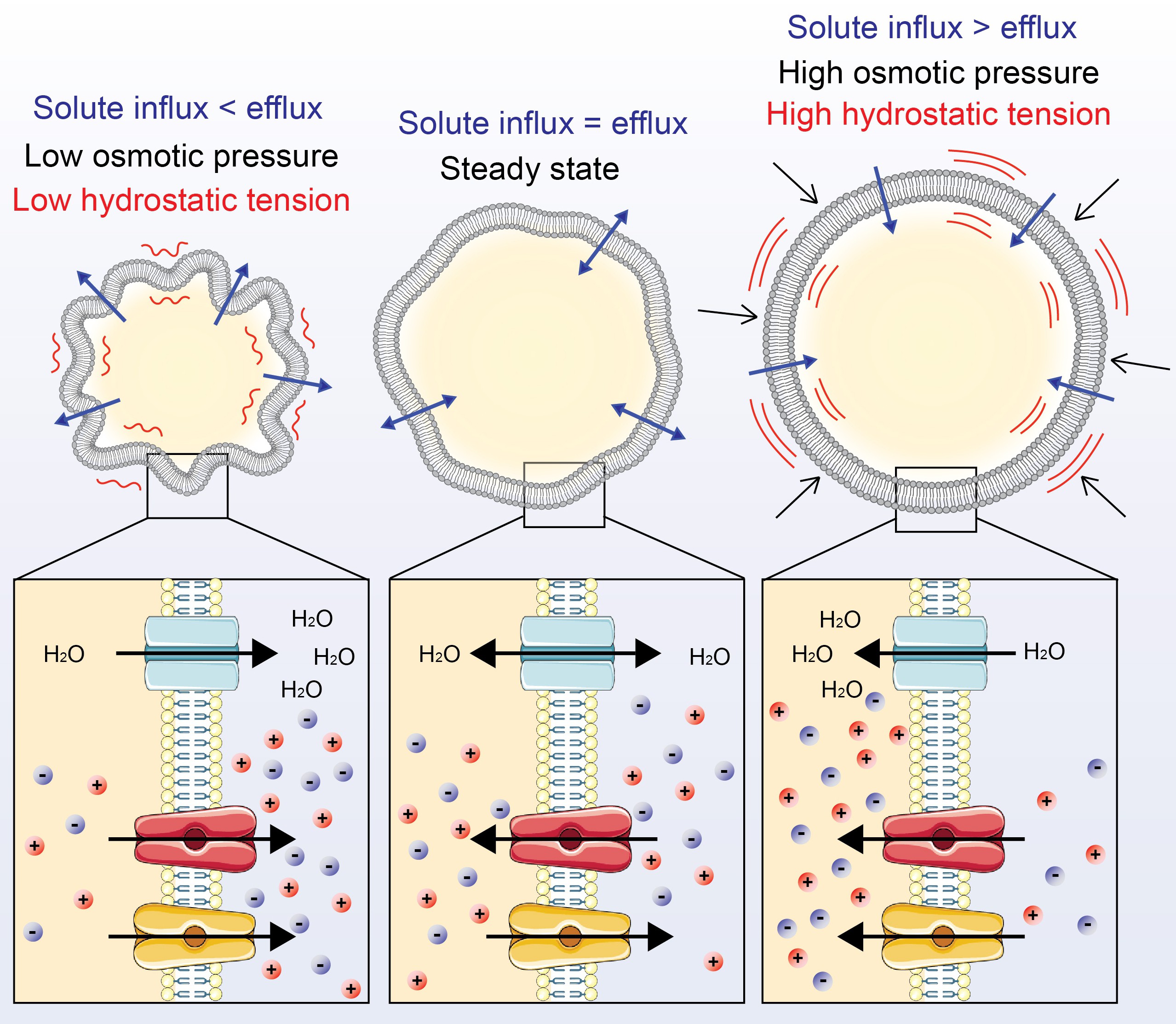Fig. 1. Solute flux across membranes. Generally, the movement of water (an incompressible fluid) into and out of membrane-bound compartments follows the concentration gradient of solutes/osmolyte on either side of the membrane. Mammalian membranes are permeable to water and at steady-state (centre), the rate of solute influx and fluid across the membrane equals that of solute efflux. As a result, no osmotic gradient is established. When solute influx is greater than efflux (right), water is drawn into the compartment, but only to an extent accommodated by the stretch that the membrane can withstand (3-5%). Beyond that point, osmotic pressure yields the movement of water which generates a perpendicular tension force experienced across the membrane. By contrast, when solute efflux is greater than influx (left), the opposite occurs; osmotic pressure briefly drops and water is drawn out of the compartment. This creates conditions of low membrane tension as volume is lost. Graphics in the lower panels were generated using Smart Servier.
